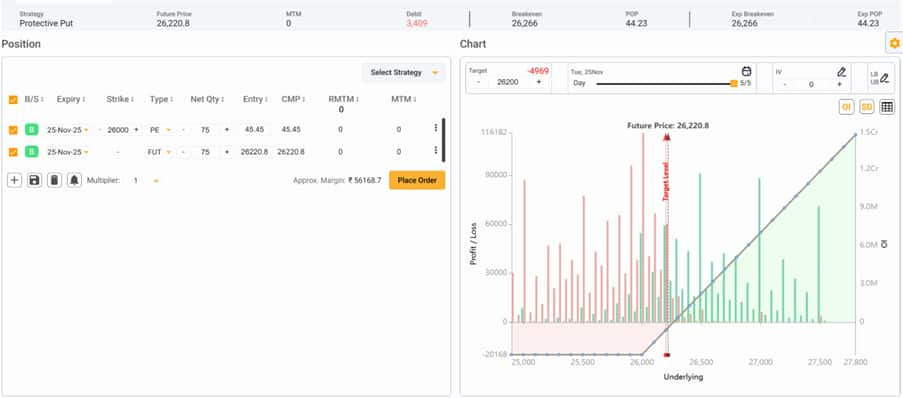3 Reasons why you should never miss taking a short trade in market
Most of the trading indicators do have long and short signals and short are the ones which can be amplified to the favour if used correctly.
SHUBHAM AGARWAL | 17-Mar-18
Reading Time: 3 minutes

Do you trade short? There is a 70% probability that you don’t. Most of the investors are sceptical to take a short trade in the market and a ‘long only’ strategy is generally adopted. Most of the trading indicators do have long and short signals and short are the ones which can be amplified to the favour if used correctly.
Let’s look at 3 reasons why you should execute the next short sell signal of yours.
Fast Movements
Most of the corrections; be it a bull market correction or a new breakdown in the market, is steep. Had you missed the rally of 3700 points from September 05 to December 07 (2 years 4 months) a similar return could had been generated by participating in the fall post that within 9 months. This phenomenon mostly holds good even with corrections with a shorter time frame like daily or weekly.
With the market moving up, usually massive long positions are created specially with leveraging and a slight change in the equation of demand and supply leads to a chained reaction collapsing the prices with a drift. Stop losses triggers further stop losses of other investors and it leads to margin calls by broking houses for leveraged positions.
High Reward-Risk using Options
Option is an instrument that is constructed not just with the component of the underlying but also with lots of other factors, one of them is Theta (Time value). If an investor has a 300 points upside forecast on Nifty which is expected to materialize in 3-4 months, trading a call option might not either be feasible or may not yield a high reward to risk because of the Theta decay which will overrule the gains of the underlying. You might have to roll the position to next expiry leading to not-so-encouraging returns. In these situations the beauty of single option as an instrument of low risk and high reward has to mandatorily convert into complexity by adding multiple legs to it, to be able to save on theta decay.
Buying a simple put option can be rewarding due to the tendency of the market falling with a higher momentum in a correction and the Theta decay has a very small impact. An example would be 200 points correction expectation with a time frame of just 1 month. This makes trading a fall much more lucrative over trading a rise.
Volatility & Correlation
Volatility is an essential component in the construction of an Option premium . Volatility on average has a highly negative correlation with the underlying instrument. This means that if the underlying instrument goes up the volatility should correct and if the underlying instrument is falling, the volatility should rise.
Now, as we know for a long option volatility is positive. So, if the volatility rises no matter you hold a Call or a Put the option's value will increase but if volatility falls, the options prices should correct too.
Holding the equation discussed, in a falling market the volatility should go up due to the negative correlation which pushes the Put prices even higher. In this case, the profit yields due to a) the underlying moving down b) due to the volatility shooting up.
Learn and read more about open interest options from Quantsapp classroom which has been curated for understanding of options and Options open interest from scratch, to enable option traders grasp the concepts practically and apply them in a data-driven trading approach.
Recent Articles

How to make profit when markets go sideways: Shubham Agarwal
20-Dec-25

Beyond Panic: Take control when your derivatives trade turns red, says Shubham Agarwal!
13-Dec-25

Evolve Your Trade: The missing step in most trading systems: Shubham Agarwal
06-Dec-25

Best trending option trading strategies: Shubham Agarwal
29-Nov-25

3 best ways to hedge using Options: Shubham Agarwal!
22-Nov-25

When in doubt to write, do Iron Fly: Shubham Agarwal!
15-Nov-25

Identify potential turning points with advance-decline: Shubham Agarwal
08-Nov-25

Slow and spreads more efficient: Shubham Agarwal
01-Nov-25

SHUBHAM AGARWAL is a CEO & Head of Research at Quantsapp Pvt. Ltd. He has been into many major kinds of market research and has been a programmer himself in Tens of programming languages. Earlier to the current position, Shubham has served for Motilal Oswal as Head of Quantitative, Technical & Derivatives Research and as a Technical Analyst at JM Financial.
Recent Articles

How to make profit when markets go sideways: Shubham Agarwal
20-Dec-25 12:14:00

Beyond Panic: Take control when your derivatives trade turns red, says Shubham Agarwal!
13-Dec-25 09:12:00

Evolve Your Trade: The missing step in most trading systems: Shubham Agarwal
06-Dec-25 20:43:00

Best trending option trading strategies: Shubham Agarwal
29-Nov-25 09:32:00

3 best ways to hedge using Options: Shubham Agarwal!
22-Nov-25 09:11:00

When in doubt to write, do Iron Fly: Shubham Agarwal!
15-Nov-25 10:48:00

Identify potential turning points with advance-decline: Shubham Agarwal
08-Nov-25 10:35:00











